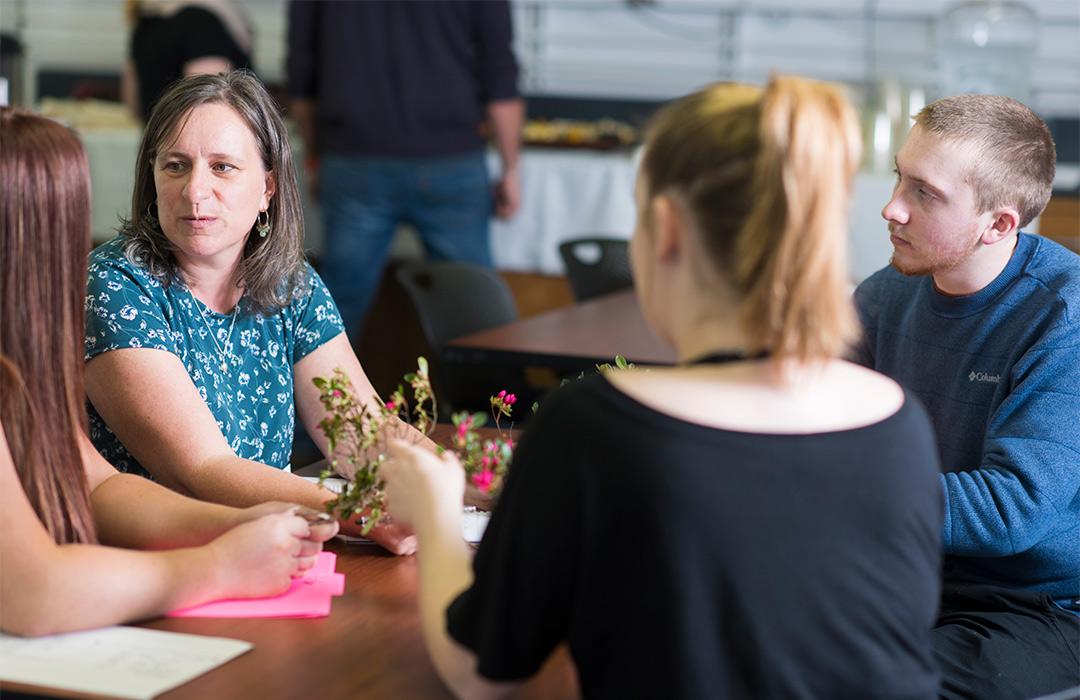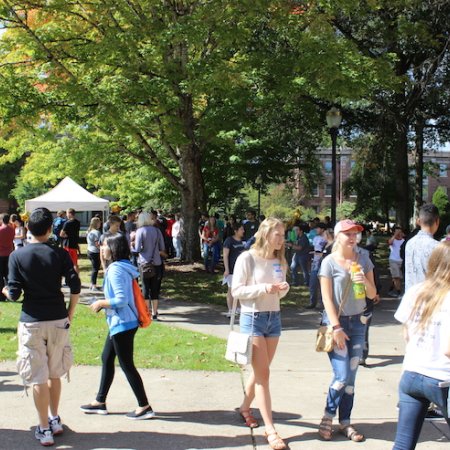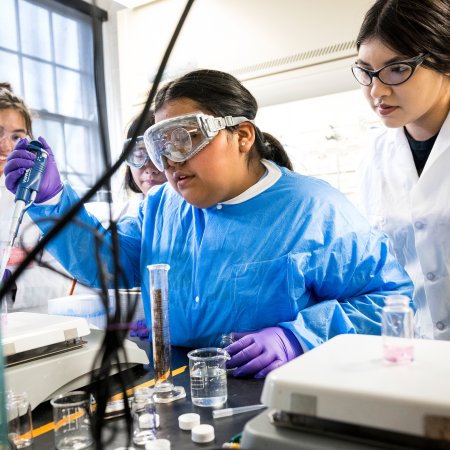Haunted by the question of how a single instructor can reach out to more than 500 students in a class, OSU’s science faculty put together the Learning Assistant (LA) Program, which puts advanced undergraduate students in the introductory classrooms to facilitate peer-to-peer learning. The LA program was founded by Kayes, Senior Biology Instructor Devon Quick and Dennis Bennett, director of OSU’s Writing Center.
Originating in integrative biology, the program has spread to other units, including physics, engineering, mathematics and more. In Fall 2017, the OSU LA Program had more than 100 LAs working with 19 different faculty, impacting more than 4,582 STEM students per term.
“We have gotten a lot better because of a really nice feedback support system from the learning assistants. Having that perspective and realizing that there’s a better way of asking questions has made our classes a lot better.” — Nathan Kirk
Implementing interactive, peer-assisted learning, research has shown, bolsters student success in a large classroom — one of the reasons being students are more comfortable asking a question of a peer rather than the instructor.
“It became evident that we needed help to get students feedback and give them greater opportunities to ask questions,” noted Kayes.
Learning assistants became a part of the undergraduate biology classroom in 2014. Ten learning assistants roam in the arena-size classroom in the Learning Innovation Center building, helping students troubleshoot questions and discuss solutions. Maggie Cote has been on both sides of the learning experience, and she uses her experiences as a former BI 21x student to guide her approach as a learning assistant.
“I engage with students who are struggling to understand the material. After going over one or two things, I can see things clicking for them,” said Cote. “I guide their learning and thinking process, without giving them the answer. This can help build up students’ scientific thinking, which can be applied to other scenarios and questions.”
Learning assistants go through a pedagogy training class taught by Kayes and her colleagues, which deepens their content knowledge, and helps them develop teaching strategies and interpersonal skills. The feedback from LAs about where students encounter difficulties in the classroom has been invaluable for instructors in the BI 21x series.
“We have gotten a lot better because of a really nice feedback support system from the LAs,” said Nathan Kirk. “When we first got feedback from the LAs, we learned that often students didn’t have any clue what we were asking. Having that perspective and realizing that there’s a better way of asking questions has made our classes a lot better.”
Additionally, the professional development training that prepares graduate teaching assistants (GTA) to guide BI 21x students in the labs has also contributed to overall student success.
“As a GTA, I felt incredibly prepared to work with our students. That professional development training makes a big impact on how we teach and respond to undergraduate students in the lab and during office hours,” said alumna Carmen Harjoe (Ph.D. ’18), an integrative biology instructor and co-coordinator of BI21x.
A class not resting on its laurels
Successfully overcoming obstacles to STEM learning and teaching has become a matter of practice for Kayes and her colleagues. When she found the published lab manual for student experiments unsatisfactory and uninspiring, Kayes marshalled a team to redesign the entire lab sequence, transforming it into inquiry-based labs and adding real-world biology contexts.
“Our students now perform incredibly well in labs, which contributes to the lower DFW rate,” remarked Kayes. “We tend to think of the lecture and lab as separate components, but we have tried to integrate them and that helps our students.”
Despite multiple achievements, Kayes and her colleagues have not stopped in their quest for excellence in the BI 21 series, and they continually pursue up-to-date practices to enhance student learning. In fall 2020, they will re-sequence and re-design the entire BI 21 series to better serve a diverse range of students, including transfer students, and to further improve active learning for all.
“We have had a lot of success and done a lot of work, but we want to keep moving things around until we feel like we’ve got it where we want it. And my guess is we won’t be done then either,” said Kayes.






